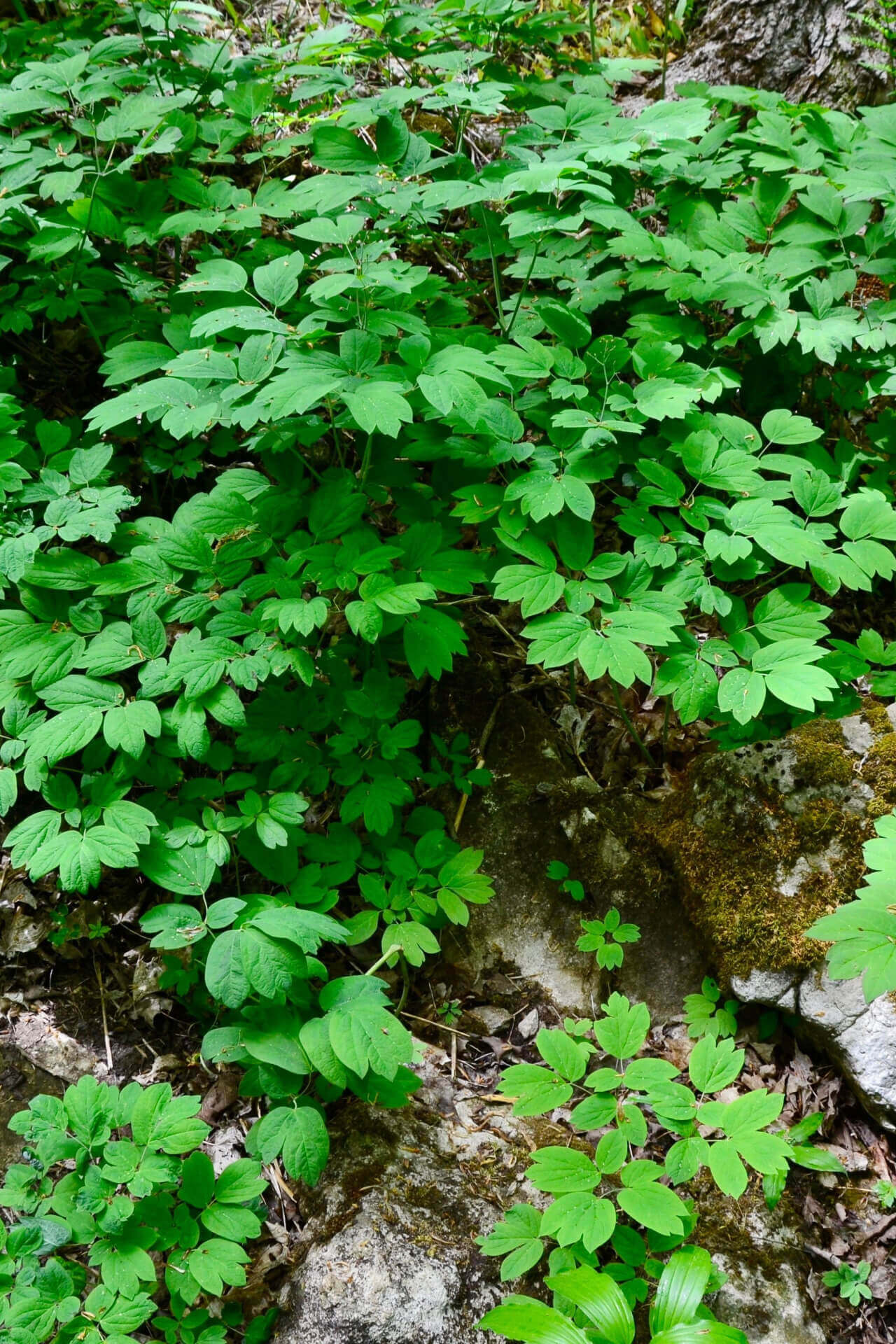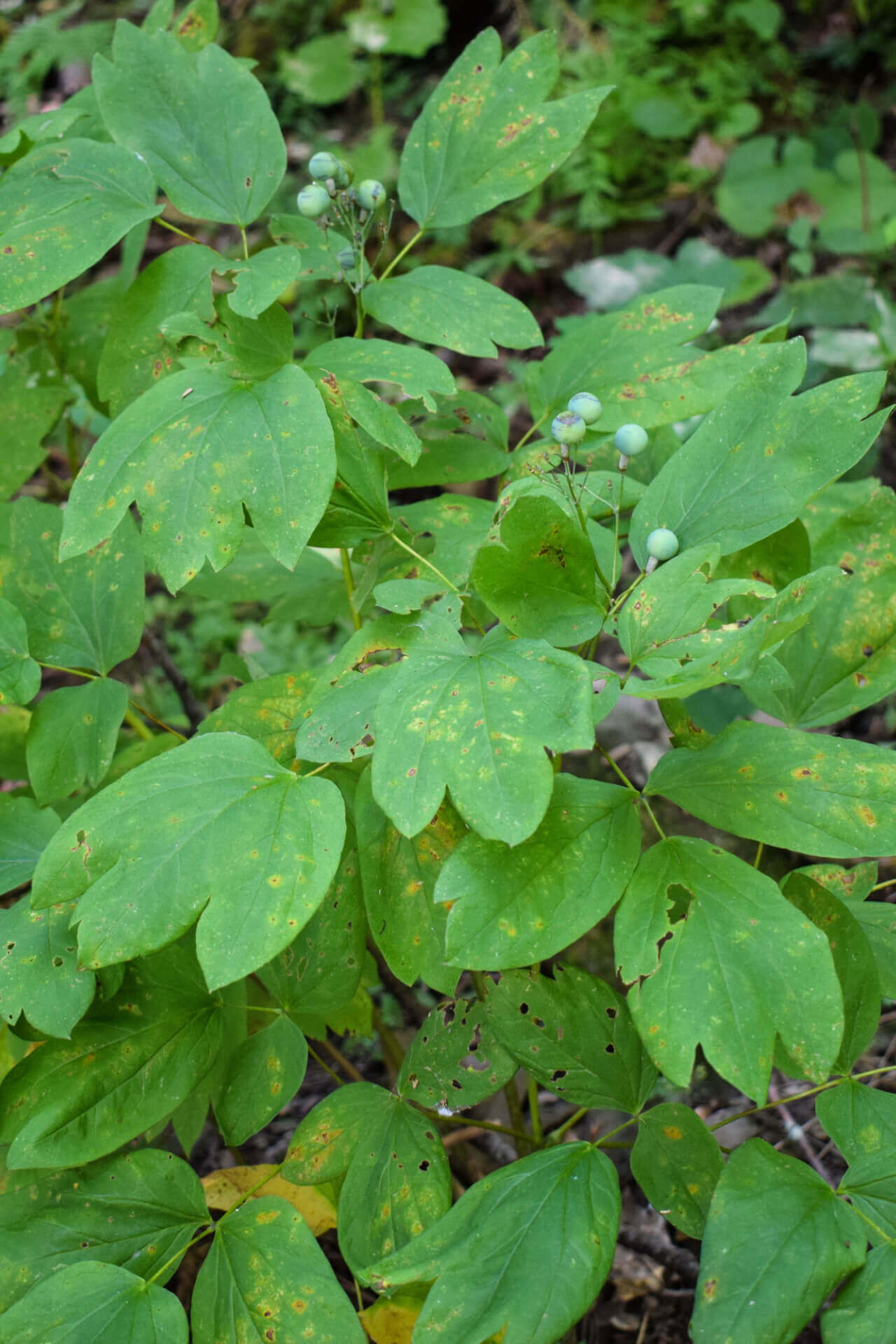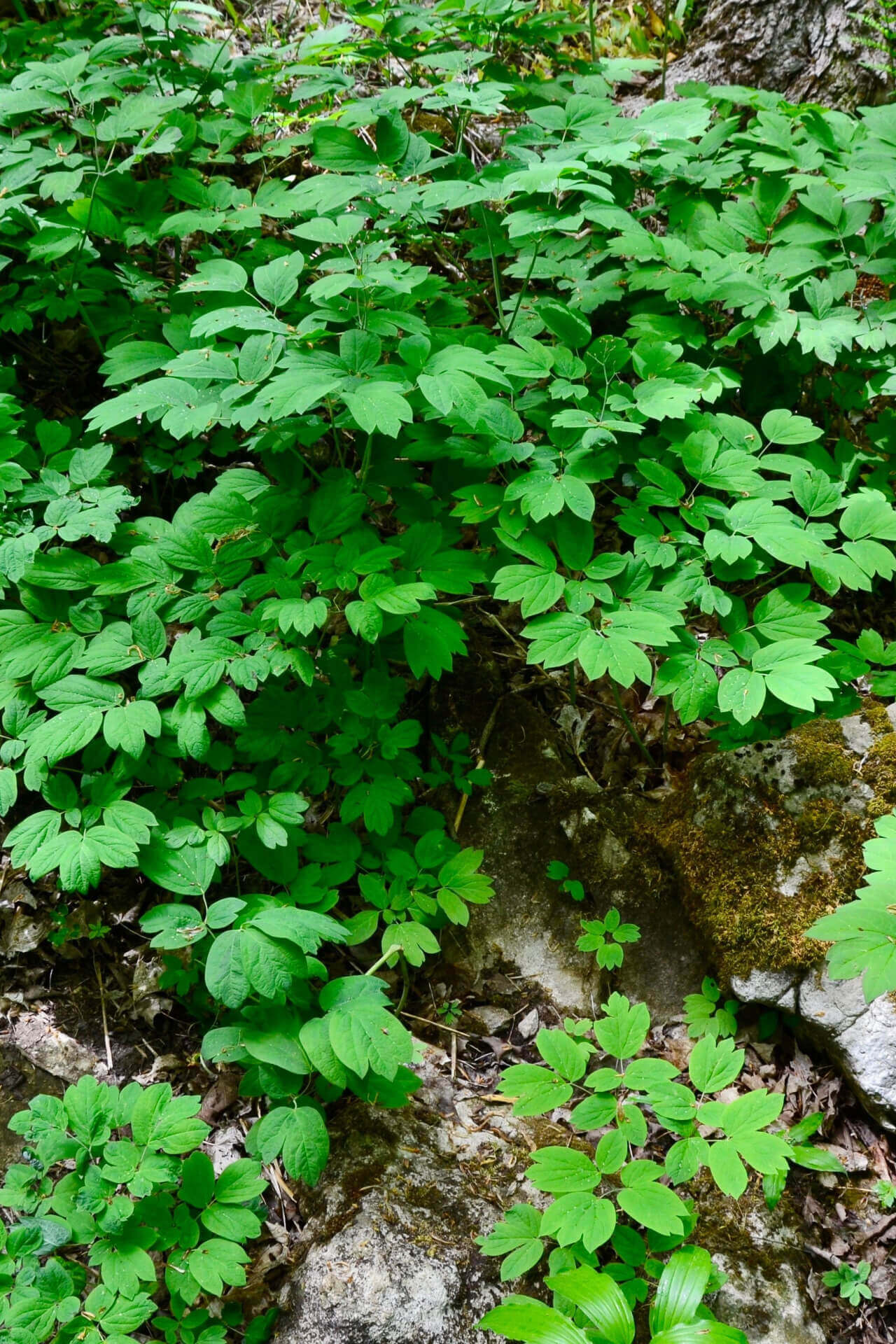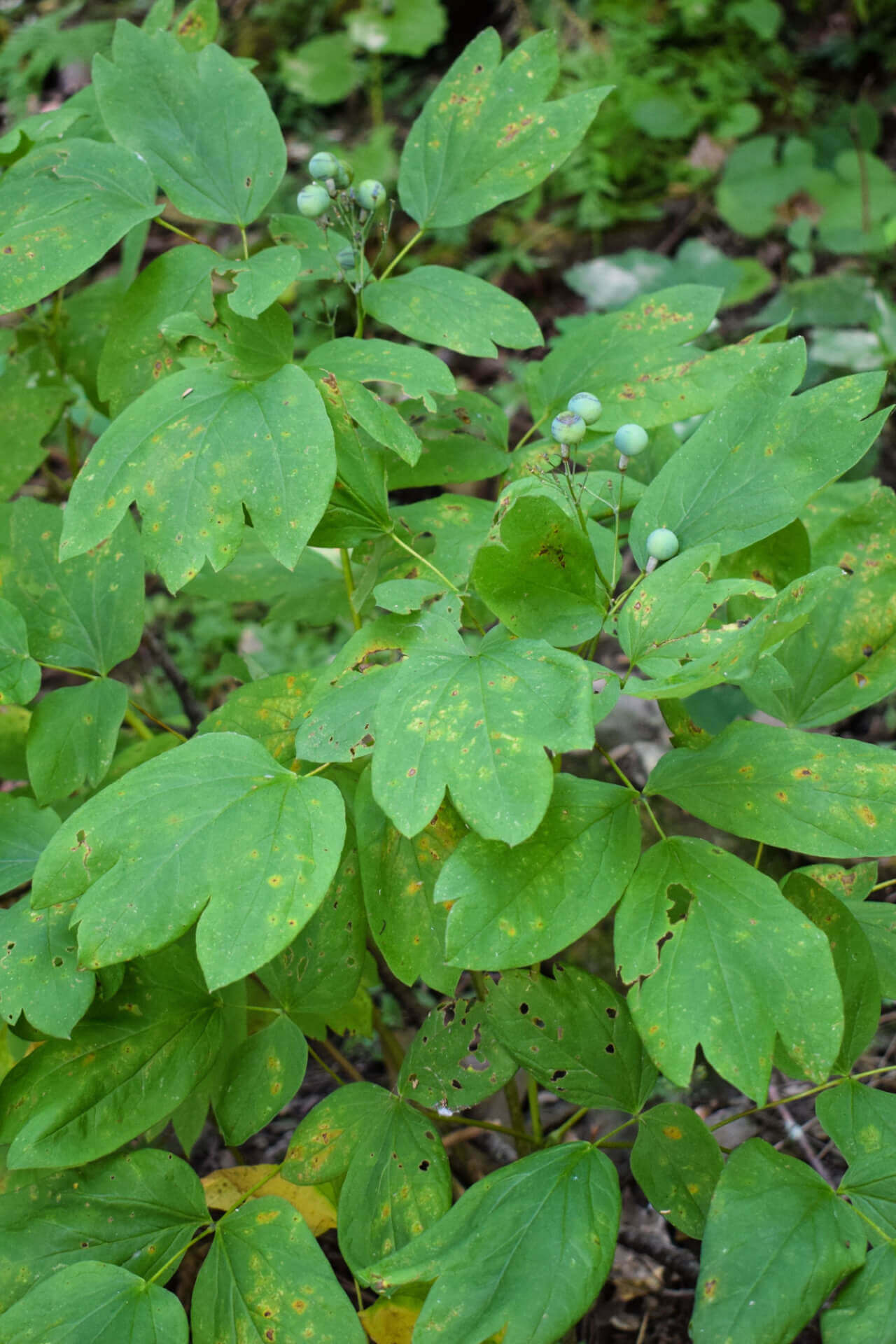


Native to Missouri, the Blue Cohosh plant can grow to a height of between one and three feet. Its upright, purplish, waxy stems showcase Foliage at their midsections, which start out as a smoky blue hue during the spring and transition to a bluish-green hue when they fully mature.
Blue Cohosh Has Unique Foliage
Leaf clusters will develop near the apex of the stems. These clusters are typically comprised of three compound leaflets, and each leaflet is further divided into nine subleaflets for maximum Foliage. Each leaflet grows to about two and one-half inches in length and width. These leaves are hairless and toothless, which makes them the perfect background foliage for this plant's flowers and fruit.
Blue Cohosh Has Small Sweet Flowers
Alongside the unique Foliage of the plant, it will be ornamented in the springtime with flowers. These are around half of an inch in diameter with six-pointed sepals that appear in a brownish-green to yellowish-green hue. Each flower features six yellow inner stamens, complete with a green ring in the center. When the summer heats up, these flowers will concede to beautifully attractive green berry-like seeds. These seeds are the most visibly desirable part of this plant, and they sit starkly above the leaf canopy.
All seeds take on a rich blue color and develop a fleshy outer coating in the late summer. Many viewers will state that the seeds remind them of small grapes. As this perennial experiences a thinning in its Foliage later in the year, these seeds provide a necessary ornament for any garden.
Blue Cohosh Has Many Names
The Blue Cohosh plant can be referred to as Caulophyllum Thalictroides, Squaw-Root, Caulophylle Faux-Pigamon, and Papoose-Root. It's a member of the Berberidaceae family and is well-known to grow into a mature, bushy perennial. Its root system is fibrous and rhizomatous, which makes this plant perfect for growing in a variety of conditions. The sweet nectar in this plant attracts honeybees, its plethora of Foliage attracts caterpillars, and its berries attract woodland birds. This plant is naturally deer and rabbit-resistant.
- Choosing a selection results in a full page refresh.
- Opens in a new window.



